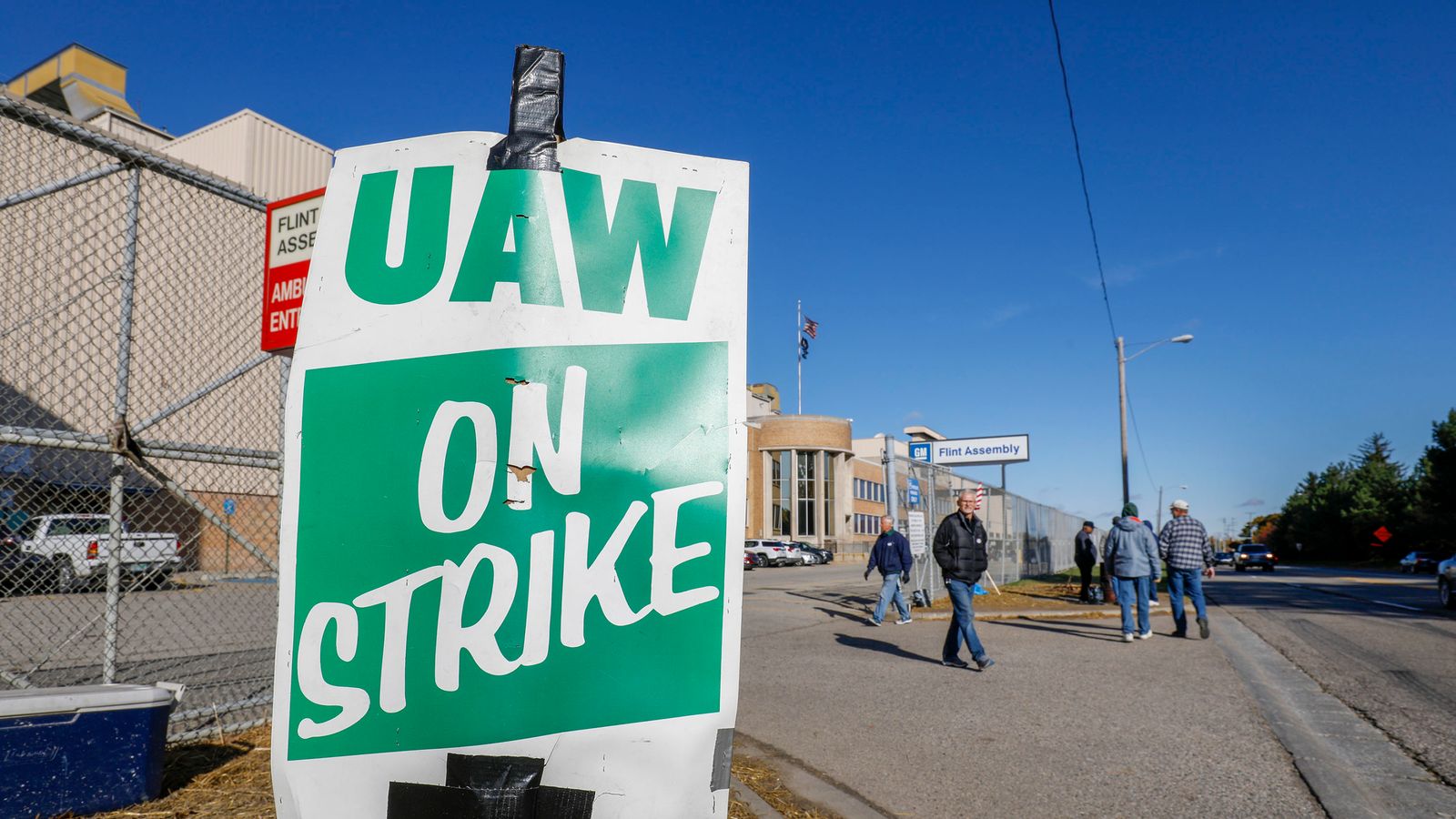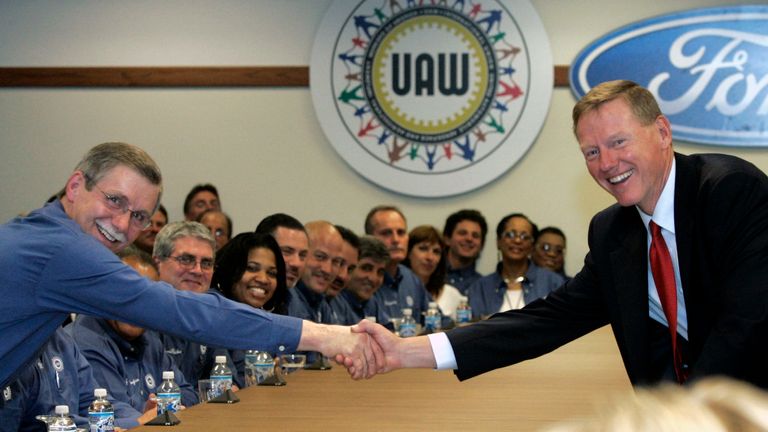UAW union to launch coordinated strikes against General Motors, Ford and Stellantis


For the first time in US history coordinated industrial action is taking place against the three major car producers, the biggest form of strike action in a year of industrial unrest across the country.
Up to 150,000 members of the United Auto Workers (UAW) union are to take part in action against General Motors, which makes Chevrolets and Cadillacs; Ford; and Stellantis, which makes Chrysler cars.
The midnight deadline, by which the largest US automakers and the UAW were to negotiate a new collective bargaining agreement, passed without a deal. As a result of the ensuing strikes, production could halt at the three carmakers.
If walkouts were to take place over weeks and months the cost to carmakers could be in the billions if car orders are not met.
Strikes are currently taking place at plants in Missouri, Ohio and Michigan with 12,700 staging walkouts.
The UAW, led by electrician Shawn Fain who took over in March this year, is seeking a pay rise of 40% over the next four years, in line with chief executive remuneration rises.
The union is also seeking an end to pay tiers, whereby some workers are on lower wage scales than others and restoration of previous contract benefits such as medical benefits for retirees and rights for those affected by plant closures.
Worker benefits were rolled back on over the past 20 years as the carmakers were in poor financial health. But makers have faired better in recent years and are set to receive federal support to aid their transition to electric vehicle production.
Read more:
Why September will be a momentous month for US industry
All the TV shows and films affected by the Hollywood actors’ and writers’ strike
Advertisement
Recently, GM, Ford and Stellantis have reported near-record earnings. In the first half of this year, Ford made $3.7bn (£2.97bn) and GM made $5bn (£4bn) while Stellantis reported profits of €11bn.
The strikes cap off a summer of industrial action after Hollywood actors and writers began their programme of walkouts, as did Los Angeles hotel workers.